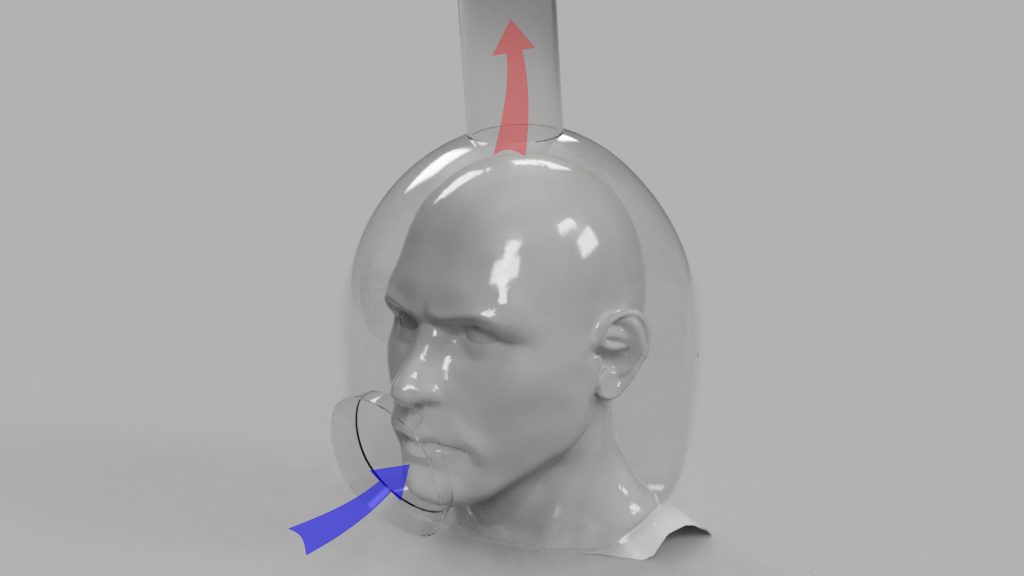From the Journal: Physics of Fluids
WASHINGTON, January 12, 2021 — The risk of infection of COVID-19 is high for medical specialists who come in contact with symptomatic or asymptomatic patients. Dentists and otolaryngologists are at particular risk, since they need direct access to the mouth, nose, and throat of patients.
The current solutions, which include wearing N95 masks and face shields, clinic room evacuation, negative pressure rooms, and special air filtration systems, are expensive, not highly effective, and not very accessible.

In Physics of Fluids, by AIP Publishing, researchers at Cornell University discuss their design of an open-faced helmet for patient use that is connected to a medical-grade air filtration pump from the top that creates a reverse flow of air to prevent cough droplets from exiting the helmet.
In a computer simulation using computational fluid dynamics, they showed the helmet design can contain 99.6% of droplets emitted from coughing within 0.1 seconds.
“To put this into context, if we use the same air pump to create a negative pressure isolation room, it will take about 45 minutes to remove 99.0% of the airborne contaminants from the room,” said author Mahdi Esmaily.
Currently available personal protective equipment does not provide open face access while maintaining high effectiveness in containing contaminants. The proposed helmet has a shell that is 1 millimeter thick and fully encloses the head with access and vacuum ports.
A nozzle is attached to the access port to extend the distance droplets must travel against the flow and minimize their chance of escape through the opening, allowing for a smoother flow transition that reduces patient discomfort generated by flow turbulence.
The proposed helmet design could also greatly reduce cost by replacing current practices. For example, building a negative pressure room with air filtration can cost tens of thousands of dollars. The cost of each helmet could be as cheap as couple of dollars if made disposable, said the researchers. Medical-grade HEPA filter negative air machines designed to power the helmets are readily available and cost around $1,000.
“Our next step is to refine the helmet design to have higher efficiency and broader application,” said author Dongjie Jia. “After that, we plan to build prototypes of the helmet and perform experiments to verify our simulation predictions.”
The simulation framework could be used as a fast and accurate way to study other particle-related phenomena and designs.
###
